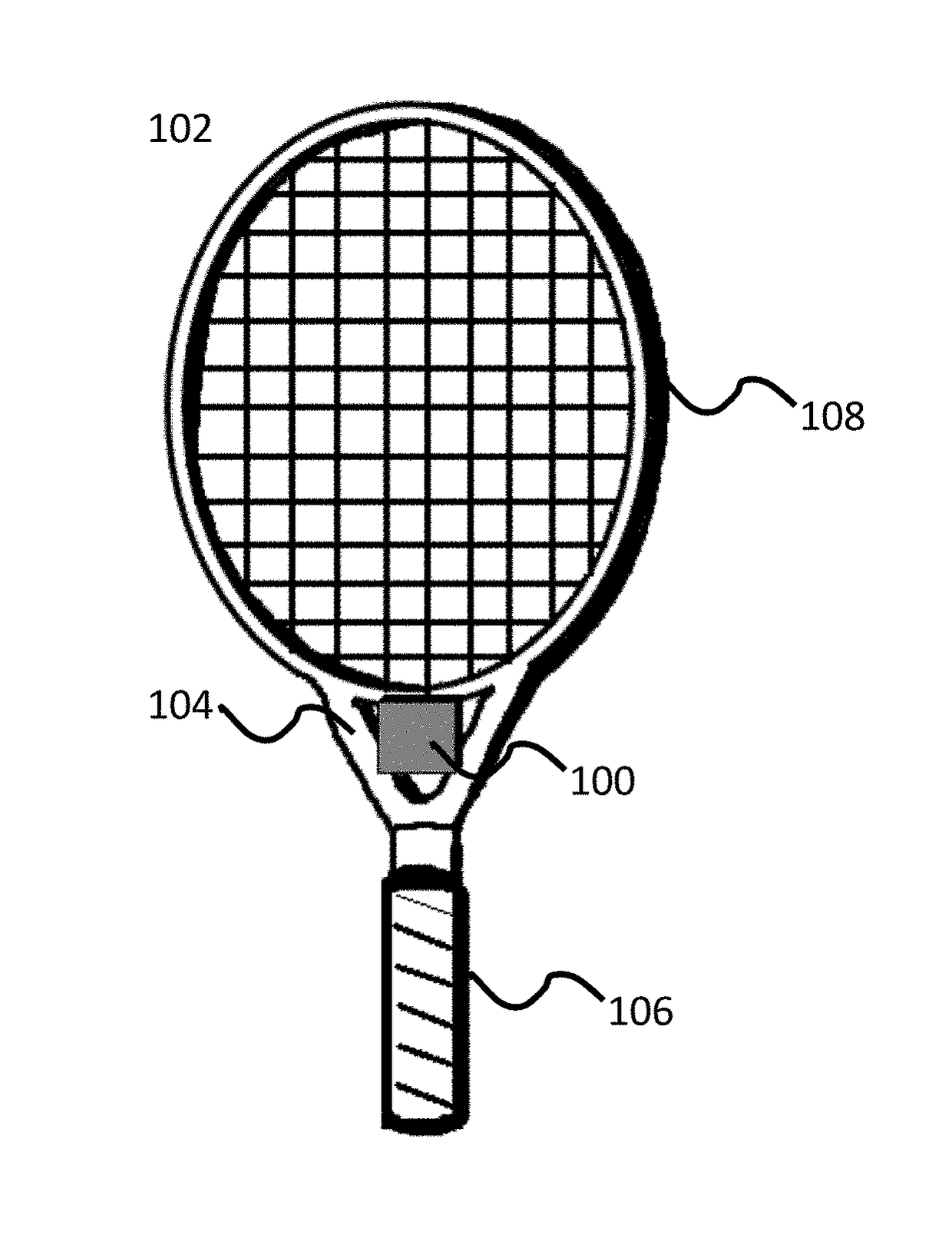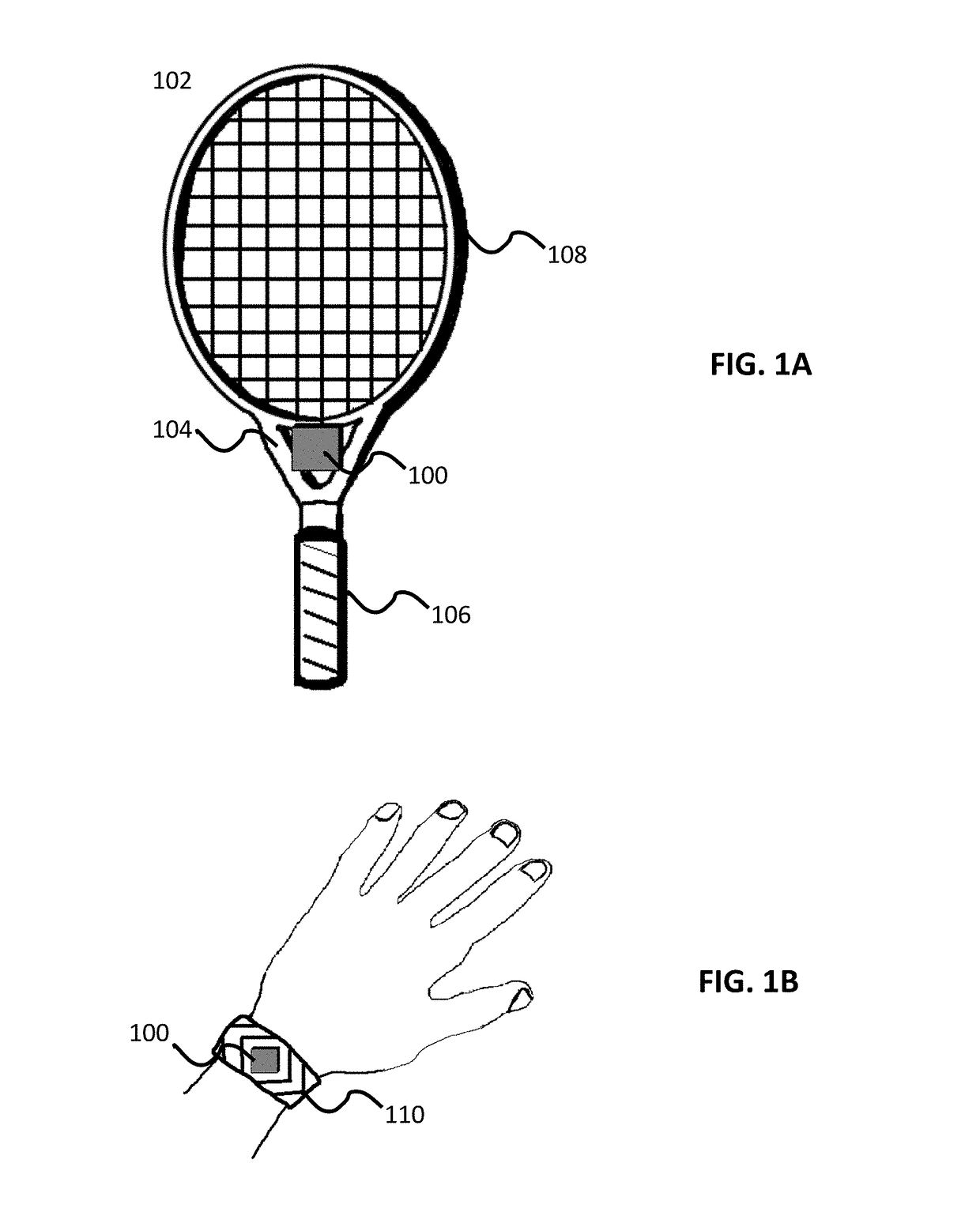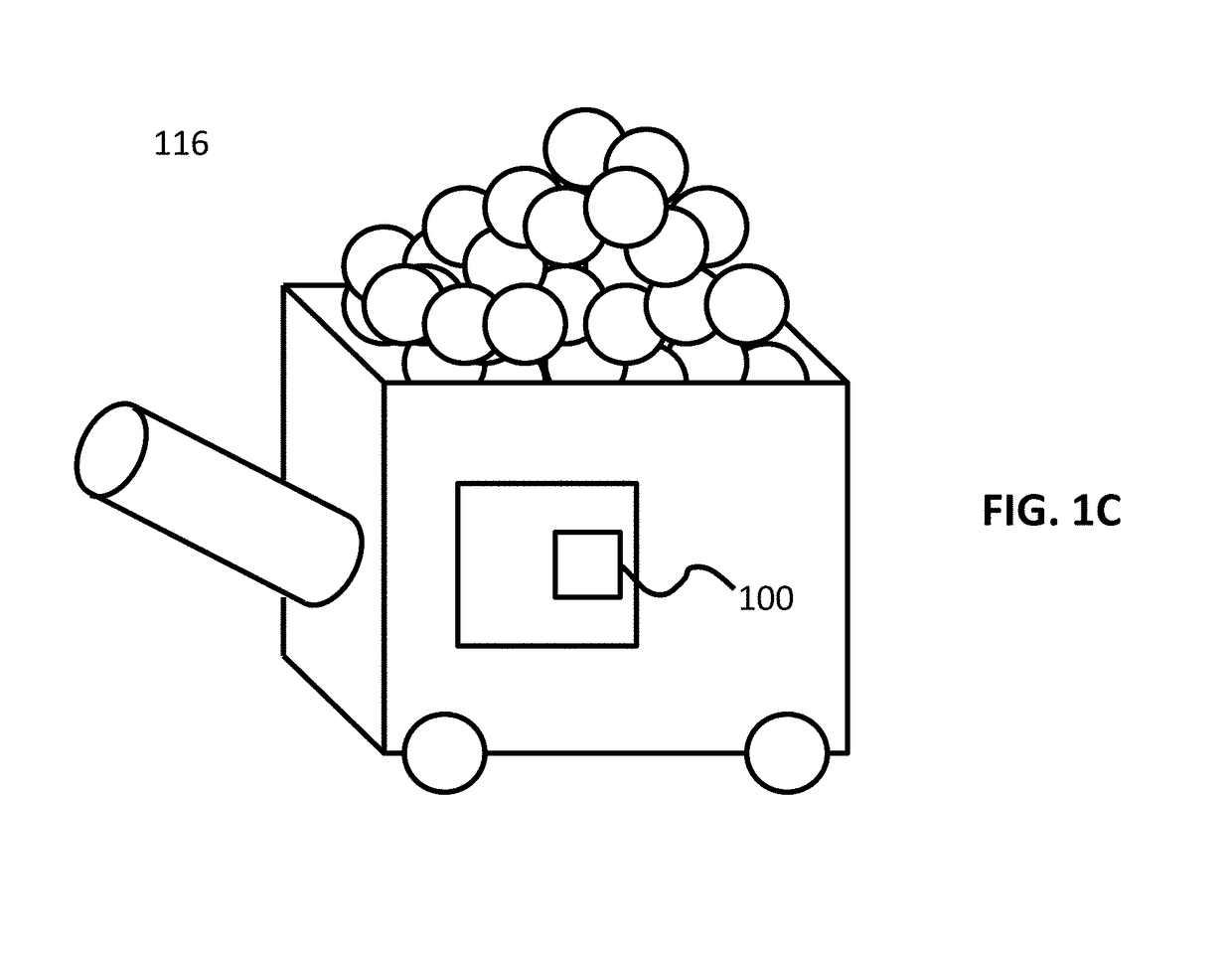Tennis racket sensor system and coaching device
a technology of tennis rackets and sensors, applied in the field of tennis racket sensor systems and coaching devices, athlete performance monitoring, athletic training, etc., can solve the problems of inability to perform consistently, and inability to maintain movement. correct or worthy of being maintained
- Summary
- Abstract
- Description
- Claims
- Application Information
AI Technical Summary
Benefits of technology
Problems solved by technology
Method used
Image
Examples
Embodiment Construction
[0037]Embodiments of the present invention will be described with reference to the accompanying drawings, wherein like parts are designated by like reference numerals throughout, and wherein the leftmost digit of each reference number refers to the drawing number of the figure in which the referenced part first appears. The terms “player” and “user” are used interchangeably throughout the description, and both should generally be treated as a user of the present invention.
[0038]FIG. 1A is a view of a tennis racket installed with an embodiment of a device for sensing racket position and motion parameters and providing feedback in accordance with the present invention. The embodiment provides a coaching device 100 installed on a tennis racket 102. As illustrated, coaching device 100 is installed in the throat 104 of tennis racket 102, i.e. in the opening between the two beams of the racket that extend from the handle 106 to the head 108. Coaching device 100 can be attached to any part...
PUM
 Login to View More
Login to View More Abstract
Description
Claims
Application Information
 Login to View More
Login to View More - R&D
- Intellectual Property
- Life Sciences
- Materials
- Tech Scout
- Unparalleled Data Quality
- Higher Quality Content
- 60% Fewer Hallucinations
Browse by: Latest US Patents, China's latest patents, Technical Efficacy Thesaurus, Application Domain, Technology Topic, Popular Technical Reports.
© 2025 PatSnap. All rights reserved.Legal|Privacy policy|Modern Slavery Act Transparency Statement|Sitemap|About US| Contact US: help@patsnap.com



